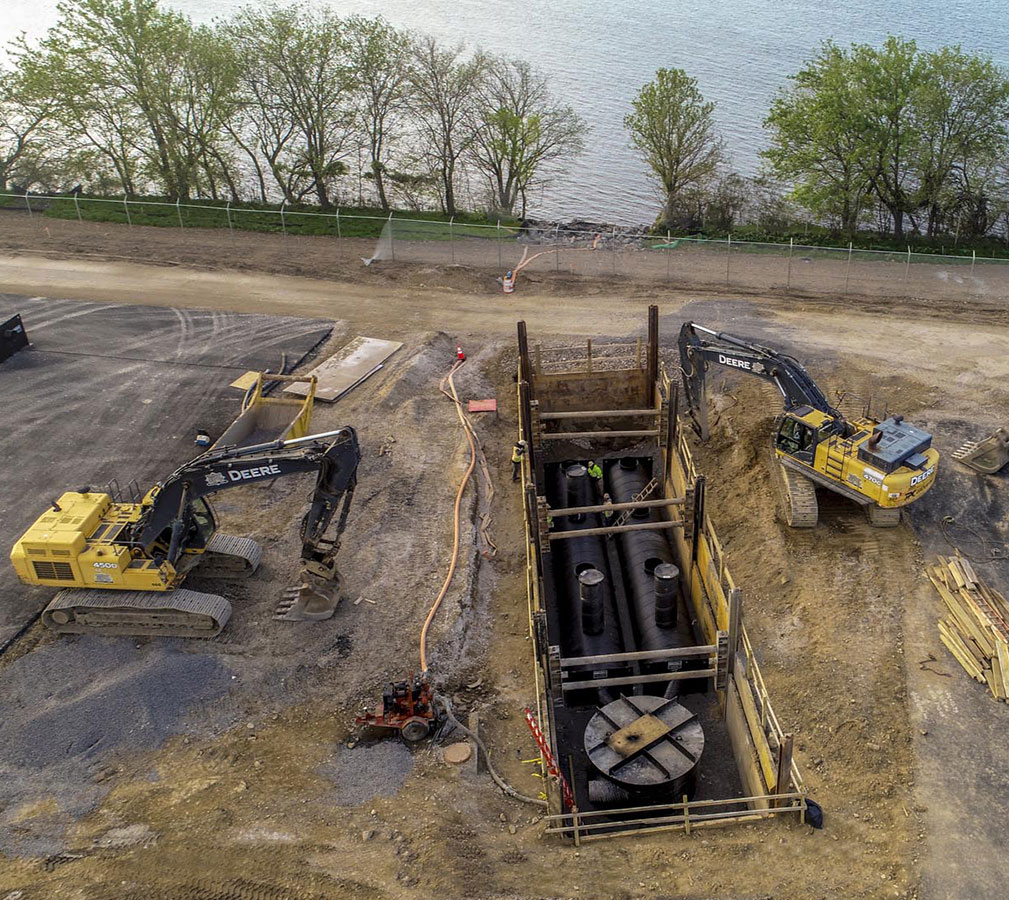Stormwater Maintenance Services
Breaking Ground Without Breaking the Ecosystem
Incorporating a Sustainable Mindset and Environmental Awareness in Construction Management
Starting a construction project is no easy task, let alone finishing it. You may have this vision to create a space that reflects the values, brand, and culture of your company (or home), and as a result, focus tends to go towards making the space look breathtaking both inside and out, while spending as little as possible. As a result, it is often hard for many businesses and family homes alike (which we’ll cover in a later post) to invest their time, money, and energy on quality materials and not to mention –vendor allocation to each role. This is especially so when considering the long-term environmental effects the construction project may have on the surrounding ecosystem, whether it be directly or indirectly influenced.
It is so incredibly important to do your part in encouraging sustainable approaches towards running a business and taking responsibility for our actions. However, implementing a sustainable mindset when choosing your materials, technologies (and just as importantly – your vendors) from the get-go is INVESTING in the future of the company!
A great place to start is by analyzing the core guidelines of the LEED program. Led by the U.S. Green Building Council, LEED (Leadership in Energy and Environmental Design) is an amazing tool that can help companies preparing for construction tremendously by prioritizing environmental sensibility both before and during the duration of the project. Projects that fail to incorporate the idea of sustainability or fail to implement any Best Management Practices upon breaking ground will find themselves degrading the surrounding biodiversity significantly, and ultimately facing harsh punishment from State regulations.
A primary indicator that construction projects commonly affect most is the health of surrounding watersheds. As many know, the California population is heavily reliant on these natural watersheds for regular supply of freshwater. Considering construction processes often involve the alteration of landmass and removal of all native vegetation, the soil’s overall stabilization is compromised, thus disturbing and sometimes even extinguishing natural watershed paths. This further affects the soils natural ability to permeate resulting in increased flooding and runoff caring excessive loads of pollutants downstream.
Without the re-stabilization of surrounding soil structure and rehabilitation of natural watersheds, the dispersion of pollutants expelled from the project site (i.e. fuels, oils, sediments, and other pollutants released during vehicle and equipment operation) collect into pools of hazardous waste. Unmanaged, these discharges can end up in our waterways. This is something not taken lightly by the state water board, and often results in thousands and thousands of dollars in fines with potential jail time if proper action is not taken immediately. As a result, it is absolutely necessary to re-establish some form of stormwater control immediately after demoing an area in order to avoid such run ins with the law, and protect the environment for generations to come.
Employing a stormwater specialist to your project (like GEO4 Services) before breaking ground on your project is a great approach in tackling your site’s needs. Not only will you be able to efficiently and effectively address and maintain your best management practices in preventing pollution dispersion via treatment and diversion controls to proper outsources, but a specialist’s involvement will allow you to organize and prioritize your sustainable goals early in your project and to ensure you comply with mandated requirements. Better yet, by becoming aware of your surroundings and the actions that are needed to be taken due to the drawbacks and opportunities presented, you are setting an example for your neighbors and community alike in creating a movement towards environmental responsibility.
Photograph Source: AquaShield Inc. Storm Water Treatment Solutions https://www.youtube.com/channel/UCuu-CNRtpMauP-iUO082rWA



